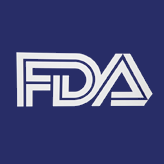FDA Approves Neratinib for HER2-Positive Breast Cancer
The FDA has approved neratinib (Nerlynx) for use as extended adjuvant treatment in adult patients with early-stage HER2-positive breast cancer.
This is the first “extended” adjuvant therapy approved by the FDA

The US Food and Drug Administration (FDA) has approved neratinib (Nerlynx, Puma Biotechnology) for use as extended adjuvant treatment in adult patients with early-stage HER2-positive breast cancer. The agent is intended for use following adjuvant trastuzumab-based therapy.
“Despite advances in the treatment of early-stage HER2-positive breast cancer, there remains a need for further therapeutic improvements in order to attempt to further reduce the risk of disease recurrence,” said Alan H. Auerbach, the CEO and president of neratinib’s developer, in a press release. The agent is an irreversible tyrosine kinase inhibitor of HER1, HER2, and HER4.
The new approval is based on results of the ExteNET phase III trial. The study included 2,840 women with early-stage HER2-positive breast cancer who were within 2 years of completing adjuvant trastuzumab therapy; they were randomized to receive either neratinib (1,420 patients) or placebo (1,420 patients), for a period of 1 year.
The primary endpoint of invasive disease-free survival (iDFS) included the first occurrence of local/regional recurrence, ipsilateral or contralateral breast cancer, distant recurrence, or death from any cause. After 2 years, the iDFS rate was 94.2% with neratinib and 91.9% with placebo, for a hazard ratio of 0.66 (95% CI, 0.49–0.90; P = .008).
The most frequent adverse events (AEs) with neratinib included diarrhea, nausea, abdominal pain, fatigue, vomiting, and others. Diarrhea was the AE that most commonly led to discontinuation of therapy, in 16.8% of neratinib-treated patients; 1.7% of neratinib patients discontinued therapy due to hepatotoxicity or increases in liver transaminases.
“The fear of recurrence is ever-present in the minds of most women with breast cancer, from the moment they are diagnosed to long after they finish adjuvant treatment,” said Marisa C. Weiss, MD, the chief medical officer of Breastcancer.org, in the the press release. “New and effective innovative therapeutic options provide a huge hope to patients and their families, giving them a better chance of overcoming breast cancer with a chance for a full life.”
Neratinib’s recommended dose is six tablets totaling 240 mg given orally once daily, with food, for 1 year. Prophylaxis for diarrhea is recommended and should be initiated along with the first dose of neratinib and continued for the first 2 cycles (56 days) of treatment.